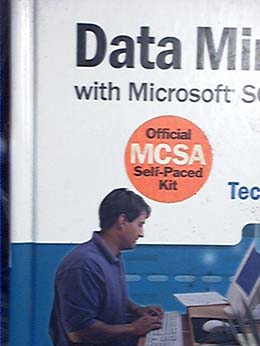
Acknowledgments xi Introduction xiii
1 Introducing Data Mining
Understanding Data Mining 3
What Is Data Mining? Why Use Data Mining? 4
How Data Mining Is Currently Used 6
Defining the Terms 7
Data Mining Methodology 9
Analyzing the Problem 10
Extracting and Cleansing the Data 10
Validating the Data 10
Creating and Training the Model 10
Querying the Data Mining Model Data 10
Maintaining the Validity of the Data-Mining Model 10
Overview of Microsoft Data Mining 11
Data Mining vs. OLAP 11
Data-Mining Models 11
Data-Mining Algorithms 12
Using SQL Server Syntax to Data Mine 14
Summary 14
Microsoft SQL Server Analysis Services Architecture 15
Introduction to OLAP 16
MOLAP 18
ROLAP 18
HOLAP 19
Server Architecture 20
Data Mining Services Within Analysis Services 20
Data Mining with Microsoft SQL Server 2000 Technical Reference
Client Architecture 21
PivotTable Service 22
OLE DB 23
Decision Support Objects (DSO) 24
Multidimensional Expressions (MDX) 25
Prediction Joins 25
Summary 26
Data Storage Models 27
Why Data Mining Needs a Data Warehouse 27
Maintaining Data Integrity 28
Reporting Against OLTP Data
Can Be Hazardous to Your Performance 31
Data Warehousing Architecture for Data Mining 33
Creating the Warehouse from OLTP Data 33
Optimizing Data for Mining 36
Visualize Relationships 146
Highlight Anomalies 146
Create Samples for Other Data-Mining Efforts 148
Weaknesses of Clustering 148
Creating a Data-Mining Model Using Clustering 149
Select Source Type 150
Select the Table or Tables for Your Mining Model 150
Select the Data-Mining Technique 151
Edit Joins 152
Select the Case Key Column for Your Mining Model 152
Select the Input and Predictable Columns 152
Opening the DTS Designer 171
Saving a DTS Package 172
dtsrun Utility 174
Using DTS to Create a Data-Mining Model 177
Preparing the SQL Server Environment 178
Creating the Package 182
Summary 208
9 Using Decision Support Objects (DSO) 209
Scripting vs. Visual Basic 210
The Server Object
Цена: 150руб.